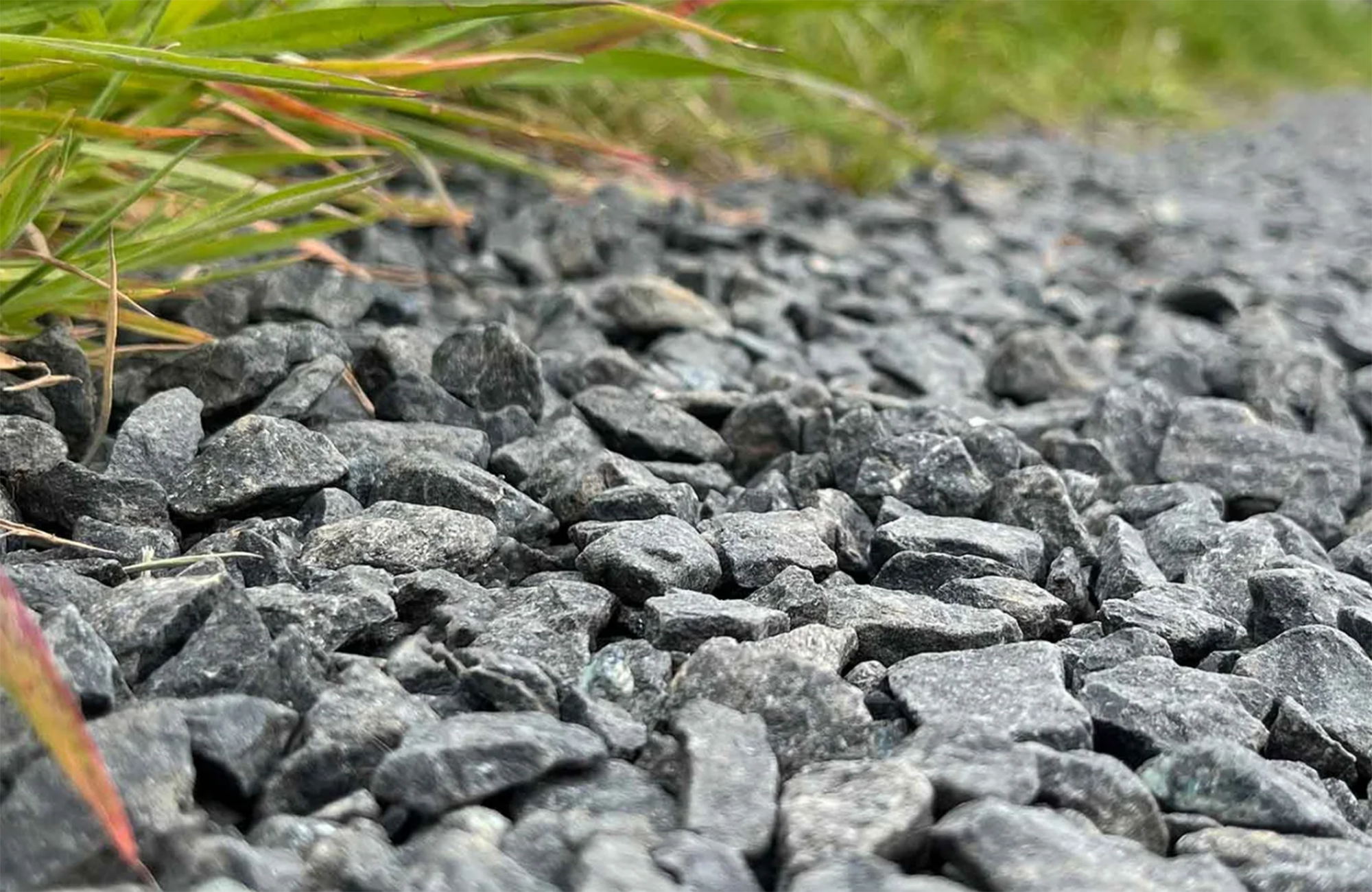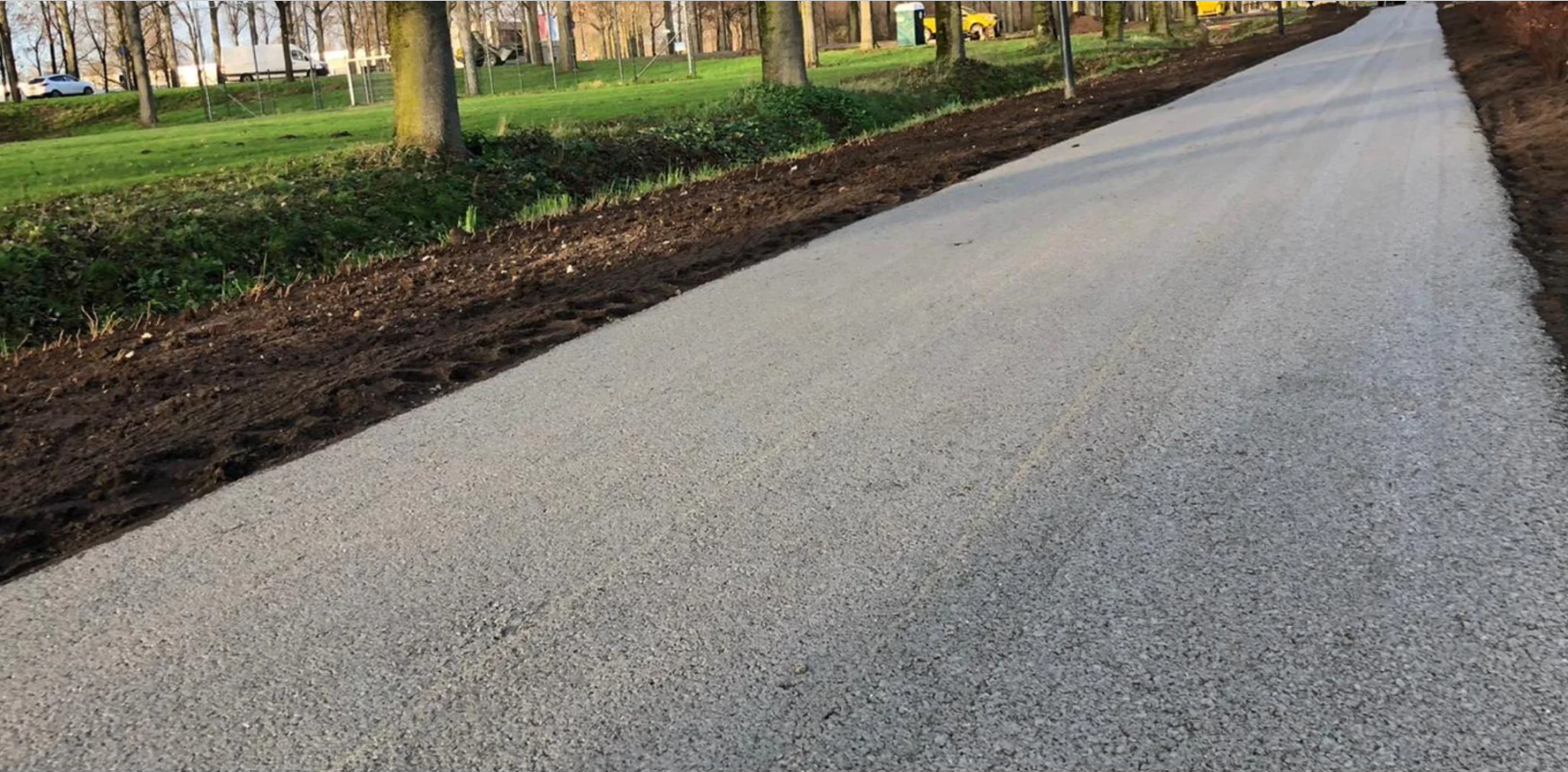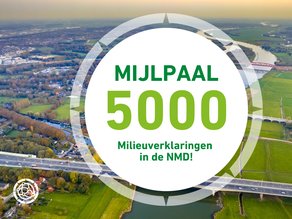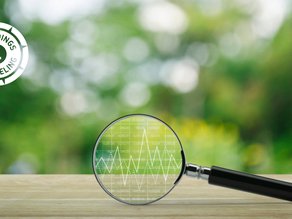Featured CAT1 Environemental declaration – Negatieve milieukosten met greenSand halfverharding en brekerzand
Image: greenSand

Last month, GreenSand Civiel BV added two environmental declarations with a minus sign to its database. This means that the calculated environmental costs of these products are negative and that due to the action of these products the environmental performance of a structure will improve. The environmental costs for a m³ of greenSand semi-paving are € - 5,10 and for a m³ of greenSand crushing sand are € - 17,82. For both products, the costs are calculated for a life span of 100 years. Immediately the question arises as to how this is possible. Marjon van Diepen of greenSand talks about how olivine, the raw material of the greenSand products, works and how this rock can help us achieve our climate goals.
CO2 paver
GreenSand provides products for the construction of bike paths, walkways and parking lots. Yet Marjon van Diepen is not a “paver. She calls herself a “CO₂-paver. This is because the company's mission is not to pave the Dutch public space as much as possible, but to contribute to solving the climate problem. First and foremost, the products we have are of very good quality, a semi-paving made of olivine sand is very hard, is wheelchair-friendly, stays beautiful for a long time and needs hardly any maintenance. In addition, it has the unique property of cleaning up CO₂. “1 kilogram of greenSand clears 1 kilogram of CO₂ from the atmosphere,” the product descriptions state. These products are made from rocks containing olivine. Semi-paving and crusher sand are the first products from greenSand to be included in the National Environmental Database (NMD). In addition, greenSand provides other olivine applications, such as ornamental gravel, and products that incorporate olivine, including garden soil and potting soil. All are useful applications with the goal of using the green mineral to clean up CO₂ in the atmosphere.

Marjon van Diepen
Weathering
“In the intended application, our products are spread on the ground outdoors,” says Marjon van Diepen. “The moment the products come into contact with water and with CO₂, a chemical reaction occurs. The reaction is triggered by the olivine. After the reaction process, lime-like substances and magnesium remain. The magnesium comes from the olivine, disappears into the soil and improves the soil. The CO₂ is then permanently incorporated into the limestone.”
To extract and sequester CO₂ from the atmosphere, olivine must weather. As olivine weathers, the chemical reaction starts, causing CO₂ to be absorbed. “Just as metal rusts, olivine must weather. The process works optimally when the olivine consists of small grades. When the rock is finely ground, it weathers faster, gains more surface area and has more contact possibilities with water and CO₂. The rock weathers into lime. The faster it weathers, the faster CO₂ is dissolved. Gradations 0-2 mm, such as sand, for example, weather up to 62% within the first hundred years.”
How much CO₂ do I clean up?
The exact amount of CO₂ you clean up depends on how much weight you need for your project. You can assume 1 ton of CO₂ per 1 ton of Olivine. This can only take hundreds of years for the great gradation, but then the stones are in circulation and they continue to do their job for generations to come. The NMD defaults to a period of 100 years. In reality, the environmental cost (the footprint in the environment) is even slightly lower and that means the environmental quality is improving.
Source: greenSand
greenSand - what's in a name?
It was for this reason that Eddy Wijnker, the company's founder, chose the name “greenSand. “The more intensively the bicycle and hiking trails are used, the faster weathering occurs and the more CO₂ is cleared. Furthermore, the temperature, the acidity of the soil also affects weathering. The more acidic the soil and the faster the weathering acts.”

No shortage of supply
The environmental declarations of greenSand crusher sand and greenSand semi-paving clearly show that the major environmental gains are achieved in the use phase (phase B of the LCA) with respect to greenhouse gas emissions. The environmental cost of the products with respect to Global Warming Potential (GWP) is overwhelmingly negative, which means that in this phase of the LCA, the products contribute to the reduction of the greenhouse effect. In addition, the products can be reused after their first life phase. This also contributes positively to the negative environmental cost of the products.
“For example, a Spanish railroad company has placed olivine rock between the rails. Large chunks also remove CO₂ from the atmosphere. Only the weathering is slower. The advantage is that after being used between the rails as secondary material, these stone chunks can be reused and the CO₂ absorption continues until the whole rock is weathered.”
However, the sum of environmental costs is negatively affected by the transportation costs in the production phase. Transporting the rock causes a substantial increase in costs. Nevertheless, there is no shortage of supplies. Some 40 percent of the Earth's mantle consists of olivine. It is among the most abundant minerals in the Earth's crust. Olivine can also be found in the deep layers of Dutch soil, but its extraction is not easy. Delving is easiest in volcanic areas, where it comes to the surface as igneous rock and can be extracted with opencast mining.
“Transportation costs are determined by the location of the quarry. We work with quarries in Spain and Norway. That's not a random choice. The rock there is easy to mine and of good quality. We extract olivine from dunite and serpentine. These rocks contain more than 90% olivine. In addition, the olivine from these quarries has a high magnesium content.”
Editor's note:
The ECI score indicates the environmental impact over the life cycle of a product by summing weighted scores for different impact categories and life stages. A negative ECI score is favorable from an environmental performance standpoint. The lower the score the better. It means that the building product has a positive impact on the thus calculated environmental quality of a structure. For more information on this weighting, please refer to section 3.6 of the Method of Determination.
A negative ECI score can result from one impact category or life stage, and thus does not automatically mean a favorable environmental impact in all impact categories or during all life stages. It is therefore important to consider the environmental impact by category and phase in addition to the overall ECI score to identify unfavorable environmental impacts.
For Category 3 environmental declarations, the underlying environmental burdens by impact category and life stage can be analyzed to gain a better understanding of where and how the environmental burden arises. This provides a deeper understanding of the overall environmental burden.
Please note that for Category 1 and 2 environmental declarations, this analysis cannot be performed due to the confidentiality of the underlying data. In these cases, only the total ECI score is displayed.
This page was translated using DeepL.



